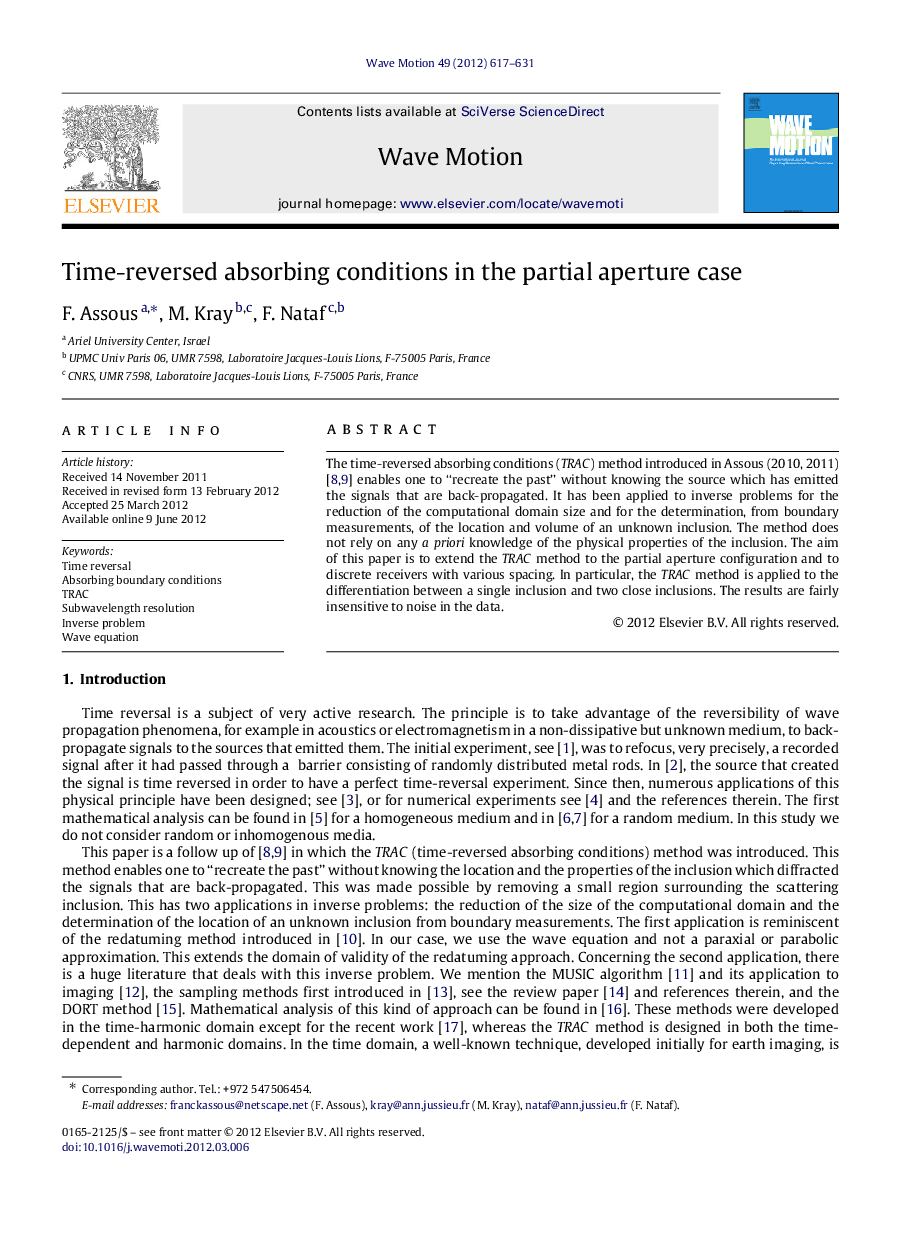| کد مقاله | کد نشریه | سال انتشار | مقاله انگلیسی | نسخه تمام متن |
|---|---|---|---|---|
| 1900245 | 1045289 | 2012 | 15 صفحه PDF | دانلود رایگان |

The time-reversed absorbing conditions (TRAC) method introduced in Assous (2010, 2011) [8] and [9] enables one to “recreate the past” without knowing the source which has emitted the signals that are back-propagated. It has been applied to inverse problems for the reduction of the computational domain size and for the determination, from boundary measurements, of the location and volume of an unknown inclusion. The method does not rely on any a priori knowledge of the physical properties of the inclusion. The aim of this paper is to extend the TRAC method to the partial aperture configuration and to discrete receivers with various spacing. In particular, the TRAC method is applied to the differentiation between a single inclusion and two close inclusions. The results are fairly insensitive to noise in the data.
► Introduction of the time-reversed absorbing conditions (TRAC) method.
► Extension of the TRAC method to the partial aperture with discrete receivers.
► Application to inverse problems: recreate the past.
► Differentiation between a single inclusion and two close inclusions.
Journal: Wave Motion - Volume 49, Issue 7, November 2012, Pages 617–631